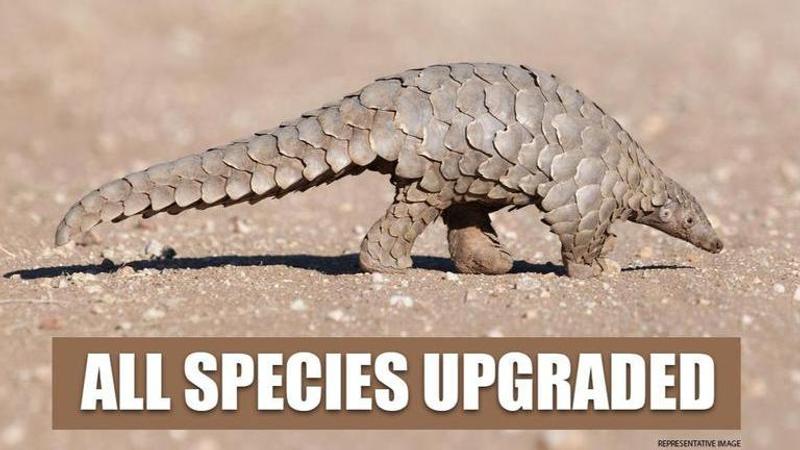Published 20:00 IST, June 6th 2020
China upgrades pangolins' protection to highest level after coronavirus outbreak
China has accorded the highest level of protection to all species of pangolins, which is believed to be the intermediate host of the novel coronavirus.

China has accorded the highest level of protection to pangolins, which is believed to be the intermediate host of the novel coronavirus, on par with the endangered species. Pangolin has been one of the most trafficked mammals, mainly due to its medicinal properties, and the use of its scale is currently permitted in China from officially approved government stockpiles.
According to the wildlife trade monitoring network TRAFFIC, tonnes of pangolins and their parts are trafficked internationally every year which has caused its numbers to dwindle. Pangolins are listed in Appendix I of the Convention on International Trade in Endangered Species of Wild Fauna and Flora (CITES) under which all international commercial trade is banned.
The Chinese Pangolin is listed under critically endangered species in the IUCN Red List, primarily threatened by indiscriminate hunting and poaching. China’s National Forestry and Grasslands Administration (NFGA) announced on June 5 that pangolins have been upgraded to the new Class I Protected Species classification.
The state agency reportedly said committed to enhanced monitoring of pangolin populations, with additional field patrols to prevent poaching and improve and restore pangolin habitats. TRAFFIC welcomed the enhanced pangolin protection status alongside the proposed actions to restore wild pangolin populations and improve law enforcement measures.
Pangolin as an intermediate host
The origin of SARS-CoV-2 is not known but preliminary studies suggested that the bats could be the source since the coronavirus present in bats has a genome that is 96 per cent identical to the novel coronavirus. It is believed that the wildlife market in Wuhan caused the virus to transmit through another host, possibly pangolin, because the bat coronavirus cannot bind to receptors in human cells, however, there has not been any concrete evidence.
According to a recent study published in Science Advances, the novel coronavirus first infected both the bats and pangolins and then the pathogens jumped to human beings. The researchers said that it is too early to blame the pangolins for coronavirus outbreak and they believe that a third species of an animal might have played host to the virus.
Updated 20:00 IST, June 6th 2020




